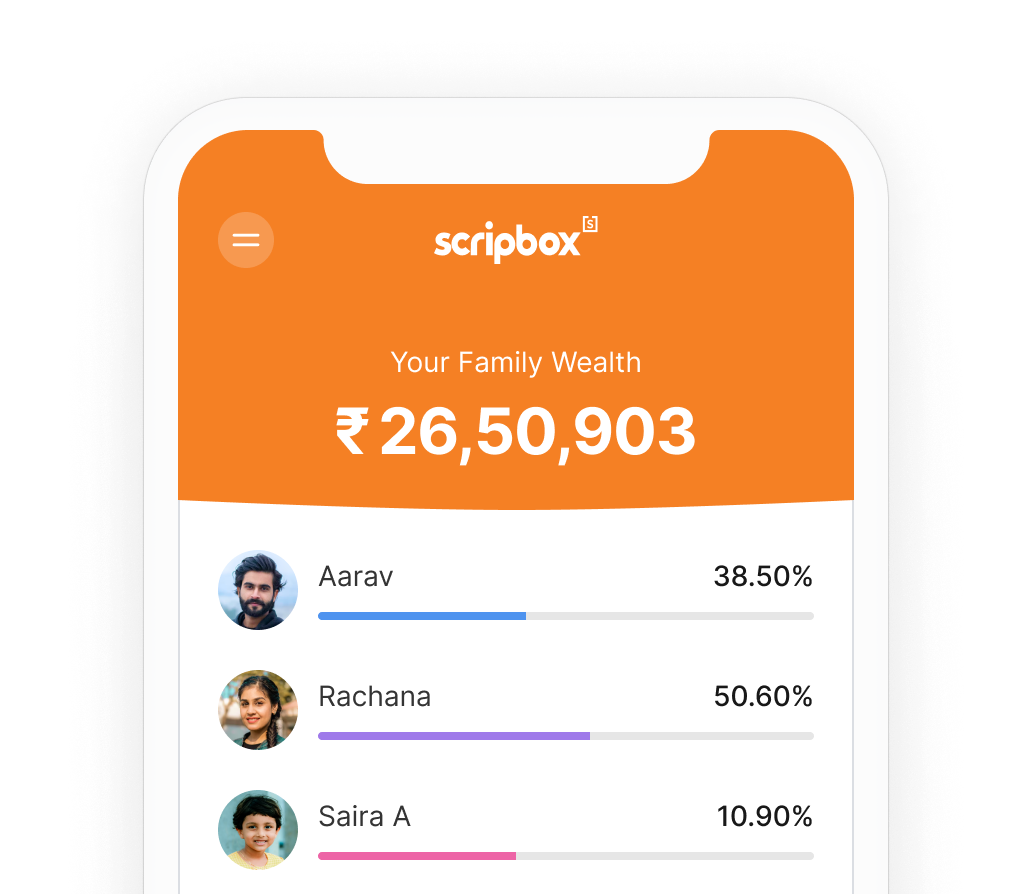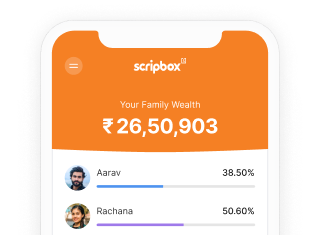Gold is an asset that holds emotional and social value in India. It is the most coveted asset that is also considered an auspicious investment. But holding physical gold comes with its own set of risks and costs. Hence, the government of India introduced Sovereign Gold Bonds (SGBs) in 2015.
SGBs are debt securities denominated in grams of gold and are issued by the RBI on behalf of the government. They are denominated in gold and pay a fixed interest to their investors.
Let us understand in detail what SGB is, its features, and its advantages.
What are Sovereign Gold Bonds?
Sovereign gold bonds (SGBs) are government securities denominated in grams of gold. The bonds are issued by the Reserve Bank of India (RBI) on behalf of the government. Since the government backs them, SGBs are considered a safe investment.
They are a form of digital gold investment introduced in 2015 as part of the government’s Gold Monetisation Scheme. When you buy an SGB, you’re not purchasing physical gold; you’re buying a bond that tracks the price of gold and earns interest. They can be held in demat or paper form and are listed on stock exchanges.
Returns from SGBs come in the form of interest and capital appreciation. Investors receive a fixed interest rate and can also earn by selling the SGBs in the secondary market.
Note that the central government announced the discontinuation of the SGB scheme in Budget 2025, citing the high borrowing costs linked to the instrument.
Features of Sovereign Gold Bond Scheme
The following are the features of the SGB:
Sovereign Gold Bond Eligibility
All Indian residents are eligible to invest in a sovereign gold bond scheme. Hindu Undivided Families (HUFs), trusts, universities, and charitable institutions can also invest in SGBs. Furthermore, guardians can invest on behalf of minors. However, NRIs cannot invest in SGBs.
Maximum and Minimum Investment in SGB
Gold bonds are assessed in multiples of grams of gold. One unit is equal to 1 gram. The minimum investment in SGB is 1 gram of gold, while the maximum limit is 4 kgs of gold per investor and for HUF. For entities, the sovereign gold bond limit is 20 kgs per financial year.
Tenure and Premature Withdrawals
The tenure of SGBs is eight years. But the SGB lock-in period is five years. However, the investor can withdraw the bond after the 5th year. The withdrawals are allowed only on interest payout dates.
Sovereign Gold Bond Returns
The current interest rate for sovereign gold bonds is 2.5% per annum. The interest is paid semi-annually on the nominal value of the investment. The total returns are linked to the market price of gold.
Taxation
The interest on these bonds is taxable as per the Income Tax Act of 1961. SGB investments do not qualify for deductions under Section 80C. The interest earned on SGBs must be declared under ‘Income from Other Sources’ while filing taxes. Tax Deducted at Source (TDS) is not applicable to SGBs.
If held till maturity, the capital gains on SGBs are exempt from tax, which makes some investors wonder: are sovereign gold bonds tax-free? The answer is yes; only the capital gains on maturity are tax-free.
However, if sold before maturity, the gains are taxed as short-term or long-term capital gains, depending on the holding period. Short-term gains (if sold within 12 months) are taxed as per your slab, while long-term gains are taxed at 12.5% without indexation.
Redemption Price
SGBs are sold at the simple average of the closing price of gold of 999 purity for the last three days preceding the subscription period. The gold prices will be the ones published by the India Bullion and Jewellers Association Limited, and they will be denominated in INR.
Advantages of Investing in SGBs
The following are the advantages of investing in SGBs:
Safety
SGBs do not carry any risk associated with holding physical gold, except the market risk. The bonds do not have any hefty making or designing charges or TDS. Furthermore, no one can steal or change ownership. Also, as they are issued by the government, they are more safe.
Additional Source of Income
SGBs offer 2.5% annual interest, paid twice a year. This provides an extra income stream, unlike physical gold or gold ETFs.
Hedge against Inflation
Gold prices have historically shown strong appreciation. This makes SGBs a reliable long-term asset for wealth accumulation.
Online Convenience
Investors can apply for SGB online through the websites of authorised commercial banks. For online applications and payments, the issue price is typically ₹50 per gram, lower than the nominal value.
Demat Account
SGBs can be held in a demat account if the request is made at the time of application. Until dematerialisation is processed, bonds are held in RBI’s records. Post allotment, the option to convert to demat is also available.
Easily Traded on the Stock Exchange
One can trade their SGBs on the secondary market. For example, after holding the bond for five years, one can trade it on the National Stock Exchange (NSE) or Bombay Stock Exchange (BSE).
Collateral
Banks accept SGBs as collateral against loans. They treat them as a gold loan after setting the loan-to-value (LTV) ratio to the value of gold. The India Bullion and Jewellers Association Limited determines the ratio.
Who Should Invest in SGB?
Investors who value gold as an asset may find SGBs attractive. These bonds offer a low-risk investment option and are well-suited to individuals with a conservative risk appetite. They also offer fixed bi-annual interest payments.
Compared to physical gold, the cost of buying and selling SGBs is much lower. For those who wish to avoid the hassle and security issues of storing physical gold, SGBs provide a safer alternative. Since the bonds are held in digital or paper form, the risk of theft is eliminated.
Individuals looking for long-term investment options with the potential for steady returns can apply for sovereign gold bond schemes.
How to Buy Sovereign Gold Bonds in India?
These bonds are sold only through the following entities:
- Nationalised banks
- Scheduled private and foreign banks
- Designated post offices
- Stock Holding Corporation of India Ltd. (SHCIL)
- Authorised stock exchanges
Investors can apply for SGBs either through online or offline mode. They can apply offline by visiting any branch of the above-mentioned entities. Or they can apply online by visiting the websites of listed scheduled commercial banks.
SGB vs Gold ETF vs Physical Gold
| Particulars | Physical Gold | Gold ETF | Sovereign Gold Bond |
| Returns | Lower due to making charges | Lower than the actual return on gold | Higher than the actual return on gold |
| Safety | Great risk of theft and wear and tear | High | High |
| Purity | The purity of gold is always questionable | High | High |
| Tax | Long-term capital gains apply | LTCG applies | No LTCG if redeemed after maturity |
| Loan | It can be used as collateral for loans | One can avail a loan against their Gold ETFs | It can be used as collateral to avail a loan. |
| Tradability or exit formalities | Restrictive | Tradable on the stock exchange | Can be traded on the stock exchange. The bonds will be redeemed after the 5th year |
| Storage | High storage cost | Minimal cost | Minimal cost |
Conclusion
Sovereign gold bonds have been one of the most efficient and secure ways to invest in gold in India, offering the dual benefit of gold price appreciation and fixed interest income, without the hassles of physical storage. Backed by the government of India, they provided a trusted, tax-efficient route to gain gold exposure.
While fresh issues are currently paused, existing bonds continue to trade in the secondary market. Investors can still consider them based on market prices, tenure remaining, and personal investment goals. As always, weigh the benefits, like government backing, against the limitations such as limited liquidity and taxable interest income before making a decision.
FAQs
Sovereign gold bonds are government securities that represent gold in digital form. They are issued by the Reserve Bank of India (RBI) on behalf of the government of India.
When you invest in an SGB, you earn a fixed 2.5% annual interest and gain or loss based on gold price movements. At maturity, you receive the market value of gold equivalent to your investment in grams.
SGBs have a fixed tenure of 8 years, accompanied by a 5-year lock-in period.

















Show comments